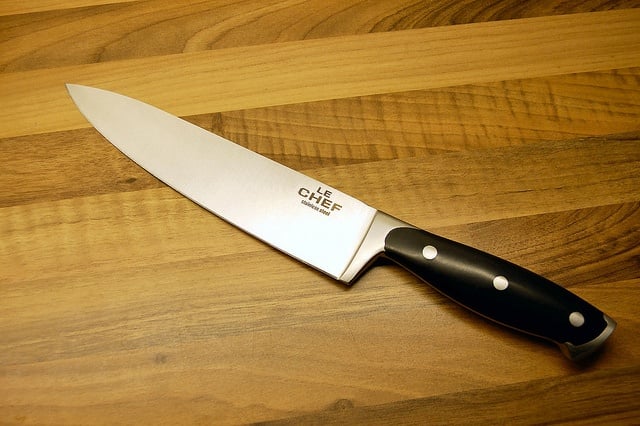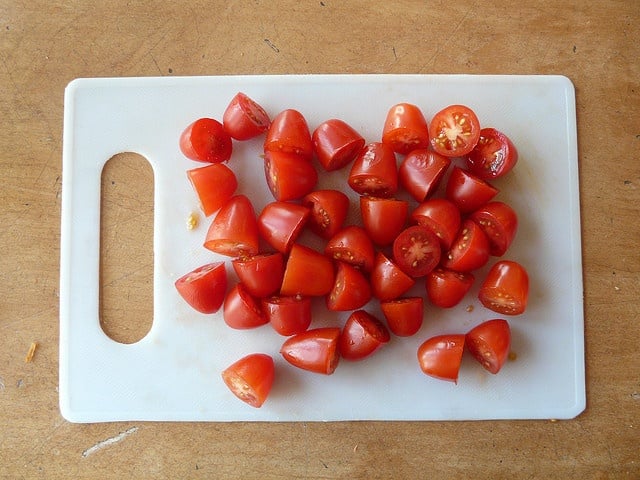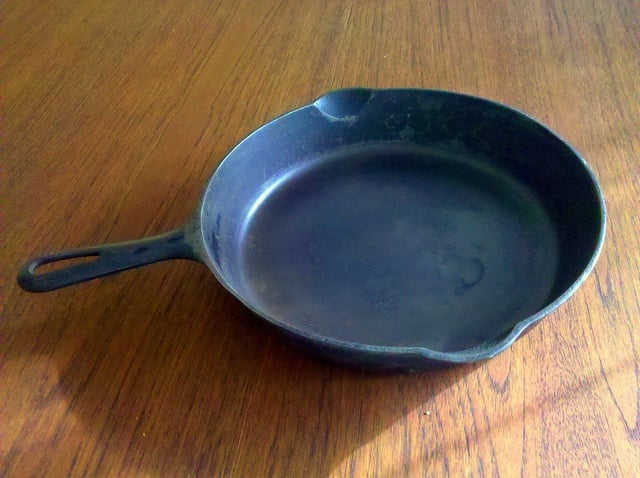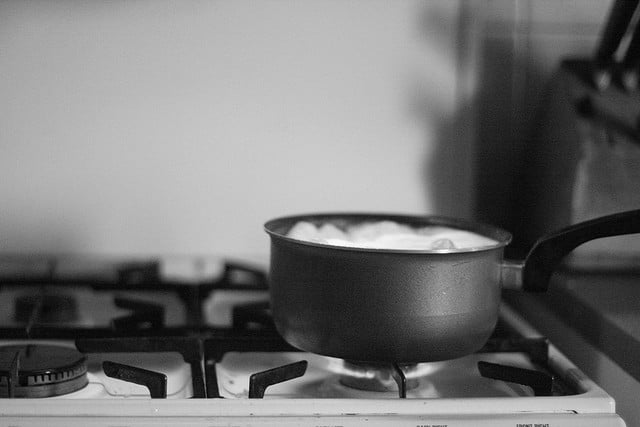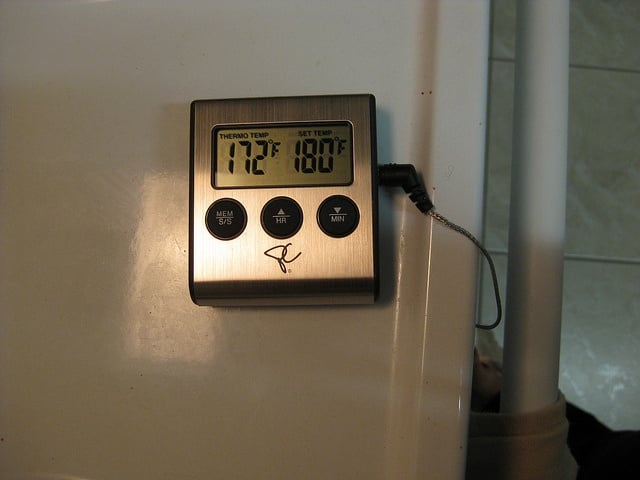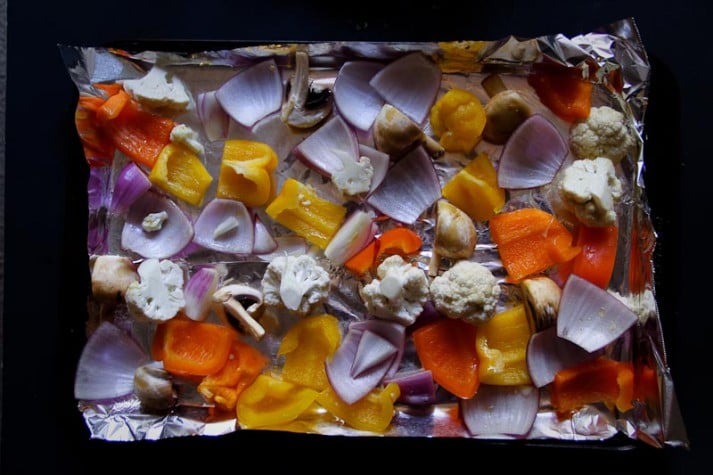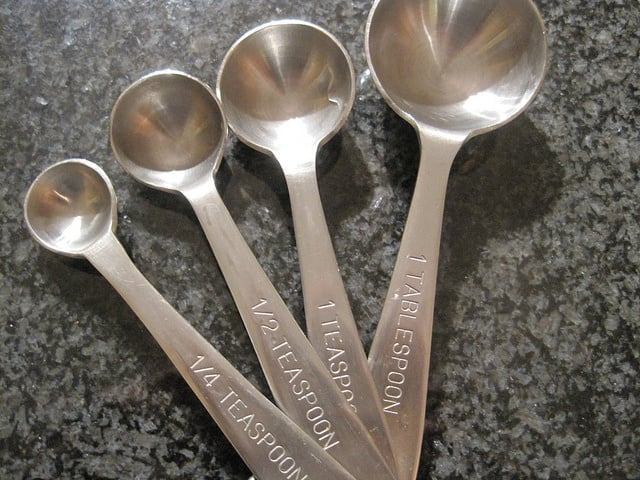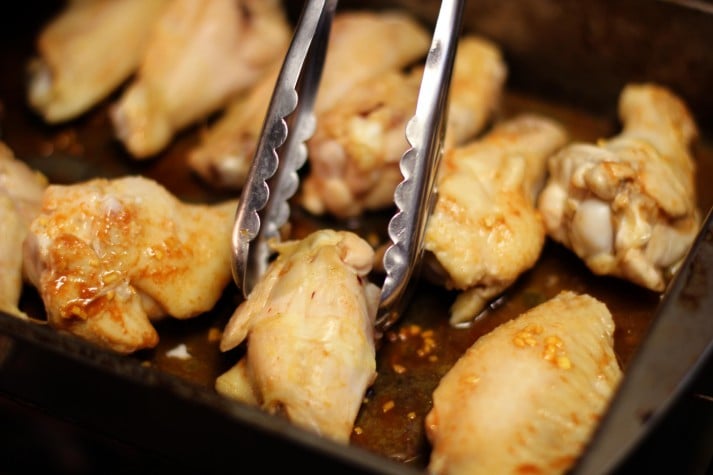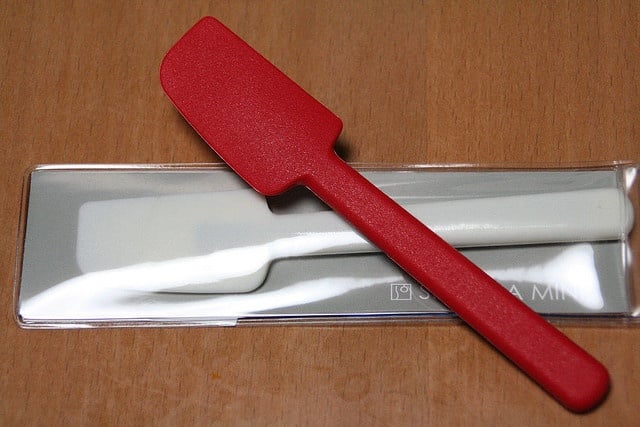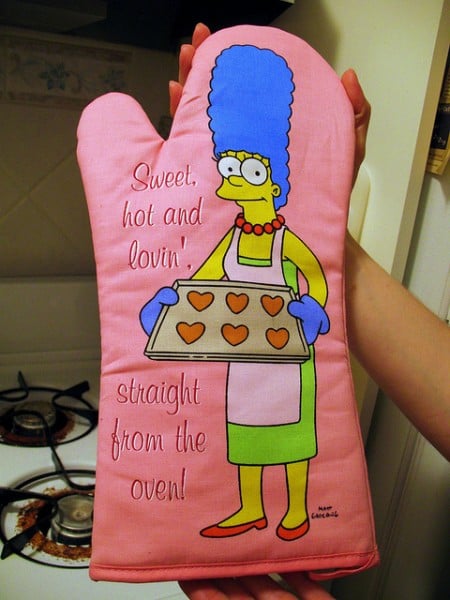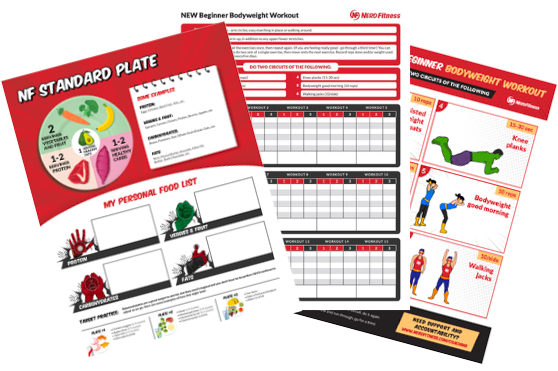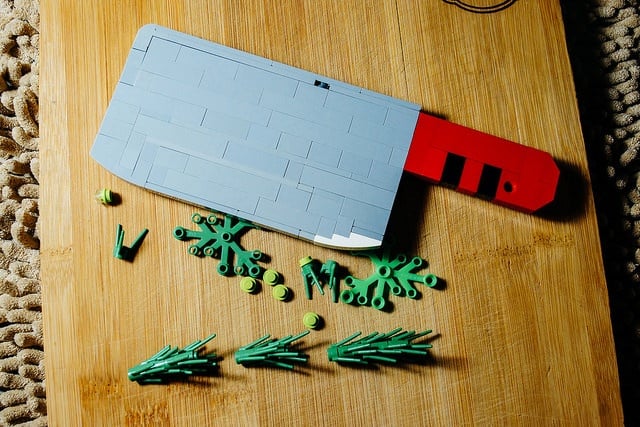
This is a post from NF Rebel Chef Noel Fernando.
Long gone are the days where sharpened rocks, sticks, and fire were the only tools we needed to prepare a meal. Though that set of equipment might be an easier list to make, I’d much rather be living in today’s world of sharpened knives and heat resistant spatulas. Life as a modern day cook is pretty good.
If you’re new to life in the kitchen, or you’ve just ventured out on your own, making a variety of dishes – especially healthy ones – can be frustrating if you don’t have the right tools. Today we’re going to learn about the 11 tools we feel are most essential to get you from 0 to 1 in the kitchen, so that you are ready to go on the quest of making your first first home cooked meal.
Now my dear friend, don’t read this list and panic. You don’t have to buy all of these things at once. You can totally accumulate kitchen equipment over time, slowly switching out crappy equipment for new stuff. Building up a set of tools that feels comfortable for you can take time and depends on your preferences and budget. Choose wisely.
To give you a little head start, we’ve provided you with Amazon links where you can pick up some of this equipment. We’ve tried to find you some inexpensive tools with the best reviews. These are affiliate links, so feel free to search for these items yourself on Amazon. We just want your kitchen to be equipped for success!
Let’s get to the good stuff!
Chef’s Knife (our recommendation)
The biggest game changer for me when I started cooking was a nice, sharp knife. Have you ever tried to cut a sweet potato – or god forbid a spaghetti squash – in half with a dull, flimsy knife? I have, and it’s terrible. Not impossible, but using a crappy, dull knife makes preparing your meals tedious, time consuming, and downright dangerous.
It may be tempting to buy an entire block of knives or several different shapes, sizes, and edges… and if that floats your boat, feel free. But if you’re looking for the most bang for your buck, I’d go with the simple chef’s knife. It’s great for cutting just about anything you might need to as a beginner. Plus, it keeps your kitchen simple and minimalist until you truly need the variety.
Cutting Board (our recommendation)
If you want to take care of your knives (and your counter tops), you’ll need a cutting board. This makes transferring food from where you cut it to your pan and pot super easy (just pick up the board with your meat/veggies on it and walk over to your stove). And it keeps your knife sharper for a longer period of time.
Go with a plastic, bamboo, or wood cutting board. Not glass or stone! Glass and stone boards will dull your knives much more quickly than the soft surface of a plastic or wood cutting board. Also, the sound of a metal knife rapping against a glass cutting board is just plain awful. We selected a very simple white cutting board.
Non-stick pan (our recommendation) OR Cast Iron Skillet for a level up (our recommendation)
Some people prefer stainless steel. Others like non-stick. I prefer cast iron. Though they take a while to heat up and they need to be seasoned first, cast iron skillets can be used for a variety of different things: cooking bacon, scrambling or frying eggs, pan seared pork chops, stir fries, sauteed veggies… the list goes on. This skillet is sort of your “do it all.”
Next to your knife, your skillet is likely going to be your most used item in the kitchen. The reason I prefer cast iron is because they are tough, they last forever, and because they’re made entirely of metal. You can use them in the oven, on the stove top, or even on a grill. And because it’s so heavy duty, you can even use it to add weight to your goblet squats or to defend your home from intruders (please don’t do this).
The size of the skillet depends on how much food you’ll be cooking, but a 10 inch skillet should work great for most people.
If you have no idea what seasoning means, but a cast iron skillet has piqued your interest, check out Nom Nom Paleo’s article on how to season and care for a cast iron skillet.
HOWEVER, for some kitchen newbies, the thought of caring for and seasoning a new cast iron skillet is a little too much work. For you folks, I’d suggest a good quality non-stick pan. Preferably one without Teflon. (Teflon is bad for the environment and it releases fumes that aren’t great to breathe if you heat them up past a certain temperature. Plus you have to replace them often because the Teflon comes off – more than likely in your food.)
If you’re making stir fries, eggs, sautéed veggies, etc., a non-stick pan is great because it’ll do all that with minimal cleaning. The only caveat is that you can’t put these suckers in the oven (especially not Teflon) because most of these types of pans have plastic or rubber parts (Some have silicone that you can put in the oven up to a certain temperature. Know what type of pan you have before you do this!). So if you opt for a non stick pan, you’ll need a baking sheet to cook your steak or chops in the oven as illustrated in this recipe.
Sauce Pot (our recommendation)
A small sauce pot is essential for making things like soups and sauces and boiling or steaming vegetables. Something small will do. If you’re cooking for a large family or doing a lot of meal prep, you could probably choose a larger soup pot, but if neither of these applies to you, a smaller 1.5 quart pot will be fine.
Meat Thermometer (our recommendation)
This might seem like a somewhat excessive tool, but it could be one of the best investments you make.
When I was growing up and learning how to cook, no one ever cooked with a meat thermometer. But when I moved out on my own and started cooking for myself, I was afraid of giving myself food poisoning by undercooking my food. When you’re starting to learn, how can you be sure you won’t undercook your meats and make yourself sick? Especially if you don’t know what meat *should* look like when it’s done?
The simplest and “stress-free” way of doing this is to know the meat’s temperature. If this is an aspect that you don’t want to worry about, do yourself a favor and get one of these.
Aluminum Baking Sheet (our recommendation)
These are the sheets that most people use to bake cookies. But they’re not *only* good for making cookies. They’re also great for roasting vegetables and baking things like chicken and fish. Roasting adds a wider variety of flavors and textures to your daily veggie intake. (You are eating vegetables every day, right?)
Want to level up your baking sheet experience? Do yourself a favor and buy some aluminum foil while you’re at it. Lining your baking sheet with aluminum foil makes clean up approximately 1793% (.333 repeating of course) easier.
Measuring Spoons and Cups (our recommendation)
If you’re following recipes and you don’t have measuring equipment, how on earth are you going to make sure you’re putting the right amount of Chemical X in your recipe for perfect little girls?
Professor Utonium didn’t use measuring cups and he ended up with super powered, crime fighting children. Okay, maybe on second thought, that isn’t the best story to warn you against not using measuring utensils, but really – especially when you’re first starting out – if you want food to taste good, use those measuring spoons and cups. I know your grandma never uses them, but that’s because she’s been cooking for the last 60 years. When you’ve got that much experience under your belt, I give you permission to stop using them.
Tongs (our recommendation)
For the longest time when I first moved out on my own, I didn’t have a pair of tongs. I’d try to use two forks, chop sticks, or a spatula to flip my food. And though it worked, it made these tasks so much more difficult. I dropped things, I splashed my clothes with grease and sauce… basically it made an even bigger mess than I was already making. If you’re ever going to grill anything, turn baked chicken, or cook bacon, you’re going to need a decent set of tongs. You’ll thank me later.
Heat Resistant Rubber Spatula (our recommendation)
The rubber spatula is the ultimate mixing tool in my humble opinion. Great for mixing just about anything, and if you leave it in your pot/pan by accident, it won’t melt into your food and ruin it. (To be honest, it’s probably best to get into the habit of not leaving spatulas in hot, cooking food though.)
Metal Turner (our recommendation)
Killer for turning burgers on the grill, flipping fried eggs, and in a pinch, scrambling… well, scrambled eggs.
Oven Mitt, Hot Pad, or Kitchen Towels (our recommendation)
Protecting your hands is a must in the kitchen. I’d venture to guess that two of the most common kitchen injuries are burns and cuts. Having a sharp knife will help prevent you from cutting yourself, and having proper protection for your hands when pulling food out of the oven or touching the handle of a metal skillet is going to be essential. Please make sure to never use a wet towel or oven mitt to touch a hot surface. The liquid inside the fabric will boil and evaporate, and you’ll steam-burn your hand.
Now, which of these you decide to buy depends entirely on your preference. For the lazy cooks out there or you minimalists, I’d suggest the simple kitchen towel. It’s multi-purpose and perfectly functional. Just make sure it’s not wet, and you fold it enough times to protect your hand from the hot pan!
That’s it!
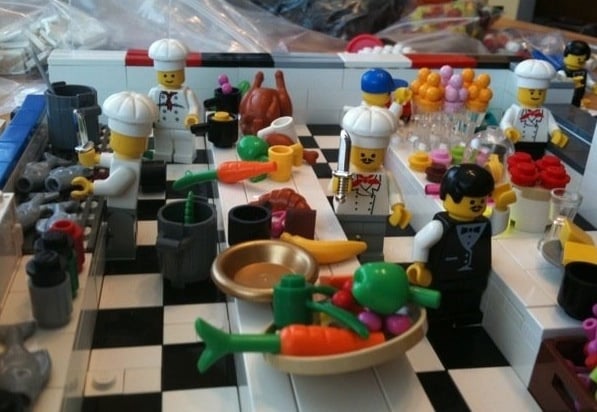
Those are our 11 kitchen tools we feel are essential for the aspiring cook. They’ll make your life so much easier when you’re learning to make your own delicious food.
To recap, if you’re somebody that just wants to put all of these things in your shopping cart and kickstart your kitchen, here ya go:
- Chef’s Knife (our recommendation)
- Cutting Board (our recommendation)
- Non-stick pan (our recommendation) OR Cast Iron Skillet for a level up (our recommendation)
- Sauce Pot (our recommendation)
- Meat Thermometer (our recommendation)
- Aluminum Baking Sheet (our recommendation)
- Measuring Spoons and Cups (our recommendation)
- Tongs (our recommendation)
- Heat Resistant Rubber Spatula (our recommendation)
- Metal Turner (our recommendation)
- Oven Mitt, Hot Pad, or Kitchen Towels (our recommendation)
Like I said before, you don’t need all of these items right away. Choose one that will help you make that recipe you’ve been eyeing. And look for sales or discounted items at places like Target, Wal-Mart, Amazon, or Home Goods, so you can build that kitchen on a budget!
Remember, we’re not talking excess here. When I first started cooking and following recipes that seemed interesting to me, I was disheartened because almost everything seemed to require specialized equipment – like a fancy blender, food processor, or slow cooker. Those things are fun to have, don’t get me wrong. They greatly expand the dishes you’re able to make, but they’re absolutely not necessary.
If you’re thinking about one of these items, I’d suggest you borrow and take them on a test drive first.
- Do you have any questions about these 11 items?
- What is your favorite tool to use in the kitchen?
- Experienced cooks, what would you add to or remove from this list?
Let us know in the comments!
###
-Noel
Pictures: Lunch: Kenny Louie, Knife: Jos Tampes, Cutting board: Emily, Cast Iron Skillet: Bruce, Pan: Flikr, Meat Thermometer: Wyn Lok, Measuring Spoons: Julie Margo, Spatula: Yoshide Nomura, Turner: Jean Etienne, Oven Mitt: Mr.TinDC, New Kitchen Knife: Song Zhen

